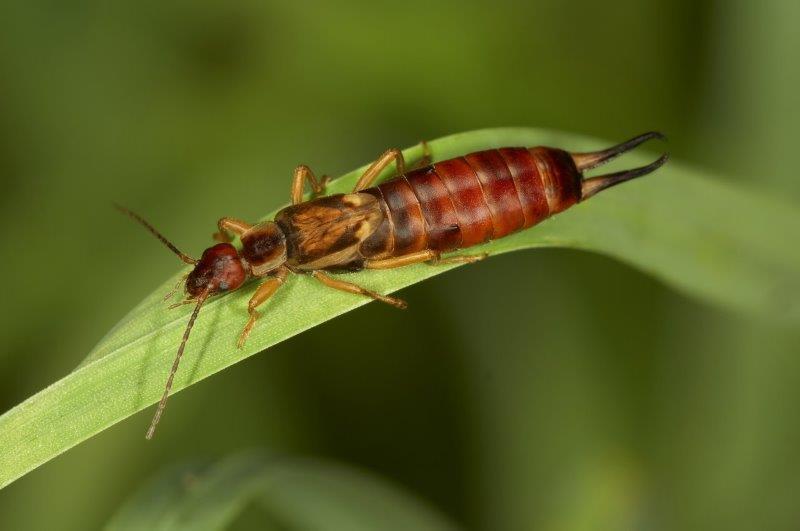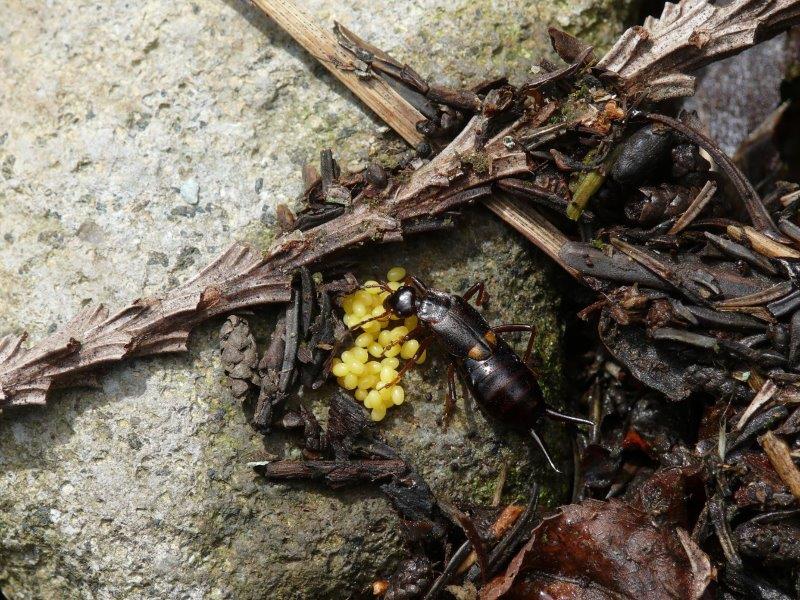There are at least 2,000 known species of earwig naturalized throughout the world, though none as abundant or widespread as the European earwig, also sometimes known as the common earwig.
Earwigs can be found in every state in every climate as they are winter tolerant and able to take shelter just about anywhere. The common earwig of North America is a true omnivore and will feed on practically anything from leaves, flowers, vegetation, whole fruits, and especially other insects.
Earwigs have a complicated relationship with home gardeners because, like ladybugs, earwigs are some of the fiercest predators of aphids, whiteflies, and scale bugs. Although the European earwig is known to consume garden crops, some gardeners will take their chances and intentionally release an earwig or two into an aphid infestation.
How to Get Rid of Earwigs
- Earwig Distribution: Temperate, damp, and wooded areas throughout the world
- Earwig Host Plants: Rose bushes, ornamental flowers, stone fruit, fruiting trees, corn, leafy greens
- Earwig Damage: Clean and evenly rounded holes chewed through leaves and vegetation
- Earwig Life Cycle: 1 year
- Earwig Eggs Per Lifetime: 50-100 eggs
- Earwig Control: Oil trap, coat stems in petroleum jelly, neem oil, diatomaceous earth
- Earwig Predators: Birds, chickens, spiders, centipedes, lizards
- Most Common Earwig in North America: European Earwig (Forficula auricularia)

What Do Earwigs Look Like?
Widely known as “pincher bugs” for the unmistakable pincers or forceps located on the end of their bodies, earwigs are generally only about ½” long with a black and brown hard-shelled exterior very similar in appearance to the American cockroach.
Not well-known for their ability to fly, most species of earwig found in the United States actually have two sets of wings, while only a fraction of the species can actually use their wings to fly and even fewer can fly well at all.
Earwigs can also be easily recognized from their defensive, foul-smelling odor which is generally emitted when either threatened or killed.
Earwig Damage

The European earwig, as well as all earwigs, are one of the larger direct-feeding insects commonly found in the garden.
Earwigs are not sap-suckers like tiny aphids and spider mites, but are moderate, leaf-eating pests that feed on foliage directly.
Luckily for the home gardener, earwigs are solitary and do not typically swarm and infest the way other pests may, which can aid against the aggressive takeover of a garden bed.
Earwig damage can look very similar to signs of snail or grasshopper chewing but with much less damage generally done to the leaf.
A lone earwig does not feed as aggressively as a much larger snail or grasshopper but can still be an occasional nuisance in your annual garden bed.
What Do Earwigs Eat?
Earwigs are omnivorous insects that notoriously feed on just about anything you can grow in the garden from ornamental flowers to entire fruits and vegetables.
While smaller garden pests such as aphids and whiteflies will only feed on the interior sap of the plant, earwigs are much larger and able to eat leafy vegetation directly like a grasshopper yet will also tunnel through soft fruits such as nectarines, peaches, and apricots.
Though widely considered a nuisance in the home and garden, earwigs are also one of the most menacing predators to pests such as aphids, scale bugs, and whiteflies.
Earwig Eggs
Earwigs mate in the late summer and early fall and, unlike many insects, females will exhibit maternal instincts after laying their eggs such as cleaning them of fungus, safeguarding from predators, and choosing to remain with their offspring for several weeks after hatching.
Earwig eggs are small, pearly white, and oval shaped, generally laid in clusters of about 50 at a time.
Eggs will hatch in early spring after a season of overwintering and, for preventative purposes, nests are generally found in wet winter foliage, mulch, and any type of cracks and crevices.
Earwig eggs can easily be spotted in a garden bed or potting soil during the winter or spring.

How to Get Rid of Earwigs
Earwigs can be tricky to keep out of the garden because they have the ability to take shelter just about anywhere imaginable.
The most effective trick to lure earwigs from the garden is to create an oil earwig trap by placing a small saucer or two out in the garden mixed with equal parts vegetable oil (or olive oil) and soy sauce. Similar to the beer trap for slugs and snails, earwigs will be drawn into the oil within hours. Oil from sardines is also just as effective to bait and trap earwigs.
Although not as popular, some gardeners will coat the stems of their plants in either petroleum jelly or an alcohol-based solution, each proven to deter earwigs from feeding.
Earwig Treatment

- Oil Earwig Trap - 1 part soy sauce to 1 part olive or vegetable oil
- Bifenthrin Spray - Commercial pesticide related to pyrethrin spray
- Organic Neem Oil Spray - 1 tsp neem oil and 1/4 tsp dish soap to 1 quart water
- Castile Soap - 1 tbsp to 1 quart water
- Diatomaceous Earth - Popular treatment for garden pests that do not fly
- High Pressure Hose - Many insecticides are sold to be attached to the end of any common gardening hose for immediate aphid control




